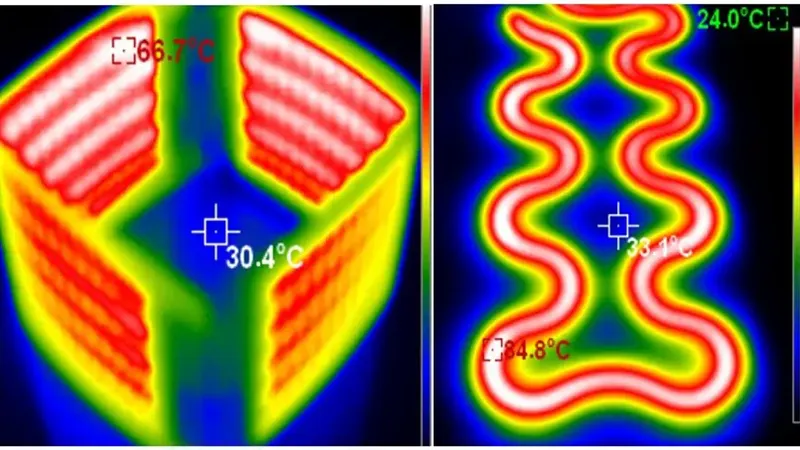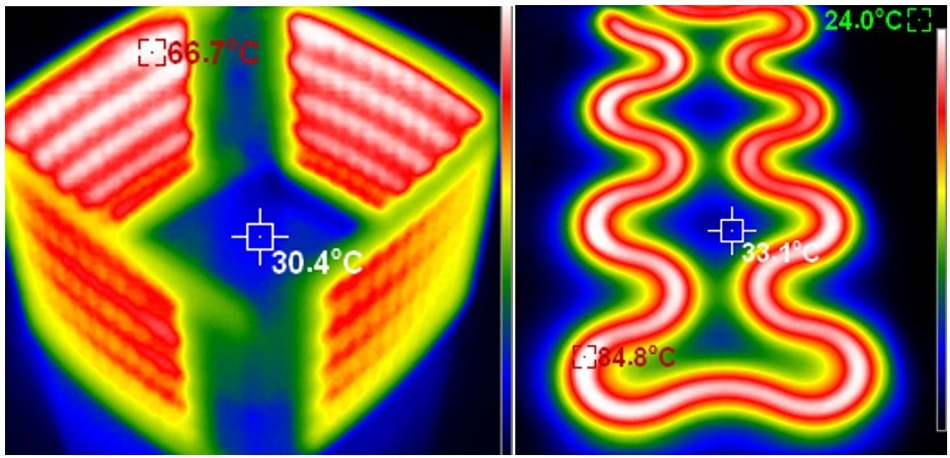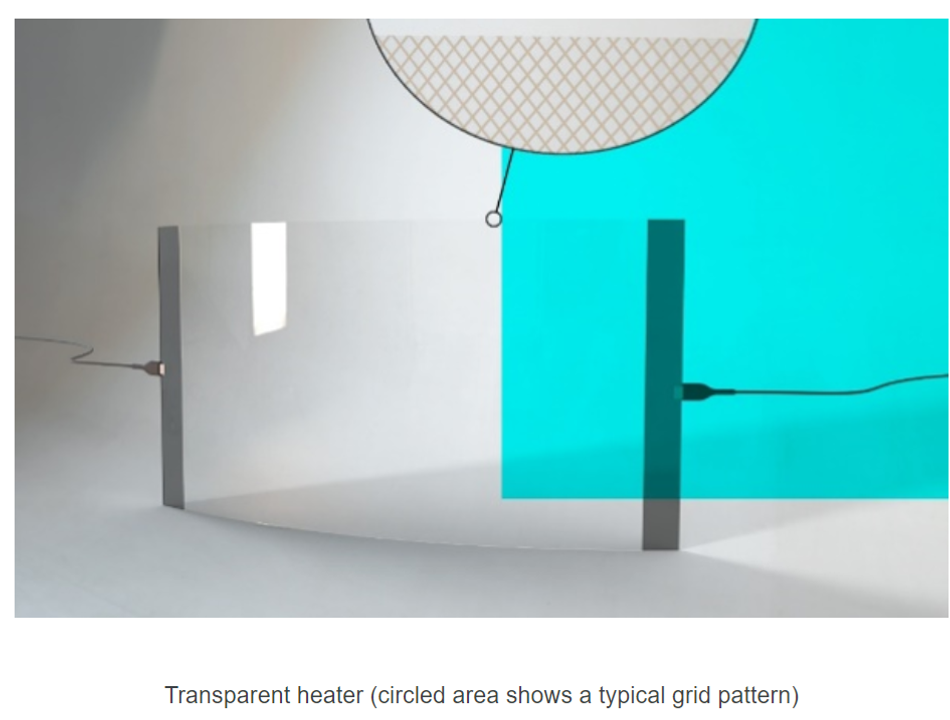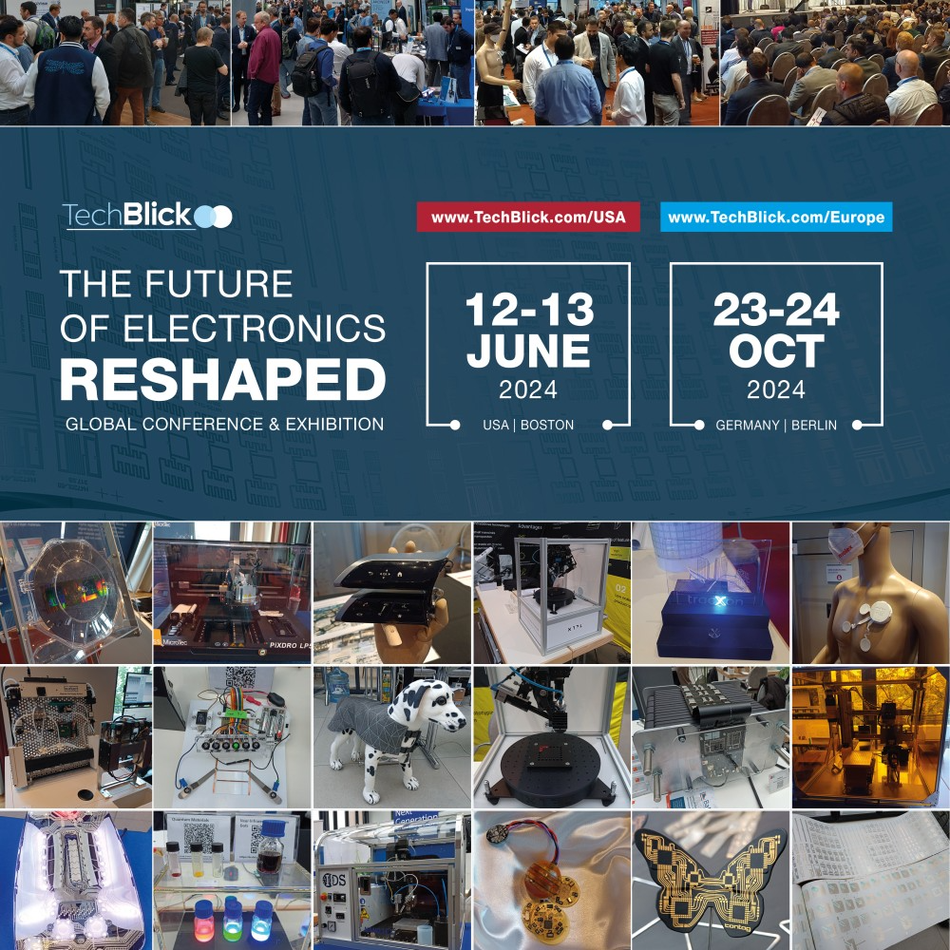Thermal and Heating Solutions for Printed Electronics
E2IP Technologies manufactures Flexible Heaters using Screen Printing Technology. This is one of the most important segments of printed and additive electronics with applications in cars, homes, and industrial settings.

This article was first published on
www.techblick.comAuthor: FERNANDO ZICARELLI (Printed Electronics Product Manager) | f.zicarelli@e2ip.com
E2IP TECHNOLOGIES manufactures Flexible Heaters using Screen Printing Technology. We use flexible and conformable inks for the manufacturing of our heaters. Printed heaters can be manufactured in high volumes using print processes such as flatbed, rotary, and roll-to-roll presses. The size of the order and complexity of the device determines the equipment that we would use.
Typical applications are Airplane/Automotive interiors, Battery and fuel cell heating, Hand tools, De-icing, Defogging, Medical, Display panels or touchscreens, Food and drink tempering, Heating for trains, mobile homes, and caravans.


Thermal Management Solutions is a hot topic of discussion in recent months; we at E2IP Technologies have multiple solutions for every application. We currently make 4 types of heaters: Serpentine (left picture), Resistive, PTC (right picture) and Transparent heaters (see below).
Each type has its advantages and disadvantages which are highlighted below:
A. Serpentine heaters are made with metallic pastes which are screen printed with materials such as silver, copper, silver/carbon, graphene, and our own Silver Salt Minks. They are a very cost-effective solution since most of the time you only need one single printed layer of a serpentine pattern (as electricity flows through the conductive traces by applying specific voltage levels will cause the metal to heat up). These types of heaters are usually printed on PI, PC, PET, Kapton and TPUs.
B. Fixed Resistance heaters combined a layer of silver paste with a resistive paste to obtain the desired value. Mixing of the resistor inks is one of the most important steps in the manufacturing of these heaters. They normally require only 2 printing steps, but a dielectric layer is sometimes added to protect from physical damage. They can be printed on PI, PC, PET, Kapton and TPUs as well.
C. PTC heaters are made with conductive inks and a specialty formulated carbon inks (for temperature output) which are arrayed in parallel as resistors tiles. As electricity flows through the conductive traces to the carbon tiles, the temperature increases in the tiles (and so does the resistance). Both the temperature and the resistance will continue to rise until the resistance is too high for electricity to flow through (this is called the Shut-off point). Afterwards, the tiles begin to cool down until the resistance is low enough for the electricity to begin flowing again. PTC heaters normally require only 2 printing steps, but a dielectric layer is sometimes added to protect from physical damage. They can be printed on PI, PC, PET, Kapton and TPUs as well.
D. Transparent Heaters are new to the industry and are becoming essential for LiDAR (Light Detection and Ranging) and other applications. The technology sends beams of light towards and object and then it measures the time it takes for the reflections to be detected by the sensor. These heaters are printed grids of silver with different levels of line widths and pitch distances. 90-100% transparency is not needed for applications where defrosting and defogging is needed, but in the case of cameras and sensors, it is absolutely required. Very specific substrates are used for this technology as the surface tension is extremely important to be able to produce fine line patterns.

Flexible printed heaters rely on a range of conductive, resistive, and dielectric pastes which are deposited on flexible substrates, such as thermoplastic polyurethanes (TPU), polyester (PET) and Kapton. Through specific patterns and deposition levels, our engineers tailor flexible heaters to meet specified operating parameters based on the application. Printed heaters typically have a good bend radius which is a function of the materials used and heater thickness. A good rule of thumb for a flexible printed heater is to have a minimum bend radius of 0.4 in. (1 cm). We recommend that power supplied to the heater to be constant for the temperature to remain constant.
For a Typical PTC Heater, the selection of the correct ink is essential to obtaining the desired; below you can see the temperature range and electrical specifications:
- Input voltage: 5 to 250 V (AC or DC)
- Drive current: at startup less than 2 A
- PTC inks available: 40°-115°C
Thermal Management Solutions are different in most cases, we would like to encourage anyone to contact our Technical Team to discuss your application.
Author: FERNANDO ZICARELLI (Printed Electronics Product Manager) | f.zicarelli@e2ip.com
Join the global industry in Boston and Berlin and let us RESHAPE the Future of Electronics. Register before 22 March 2024 for early bird rates
